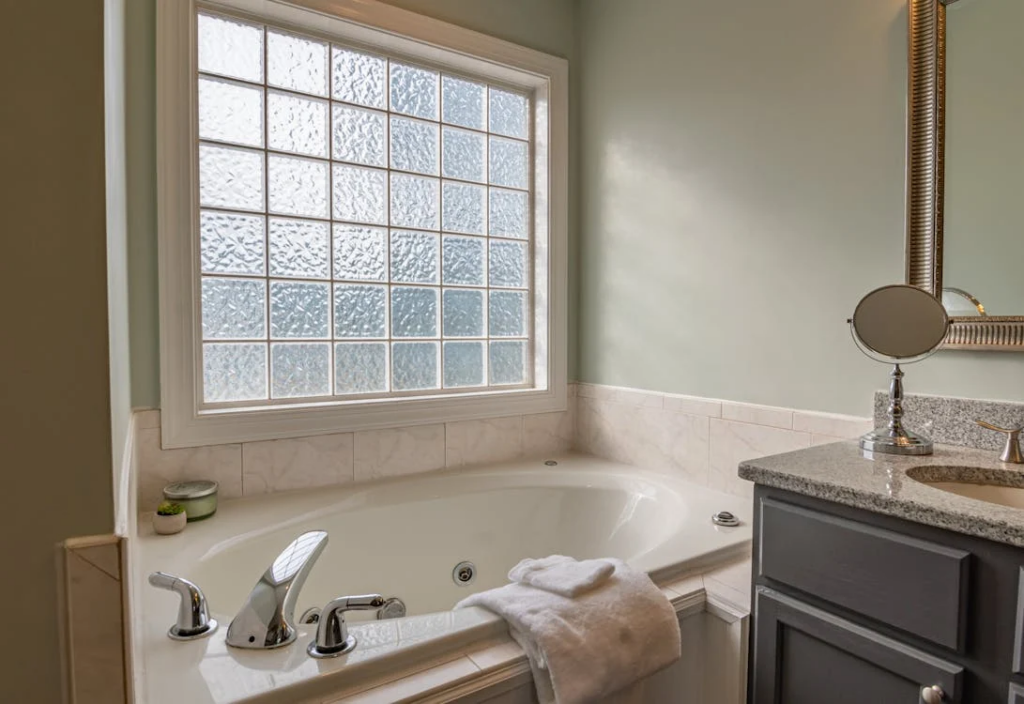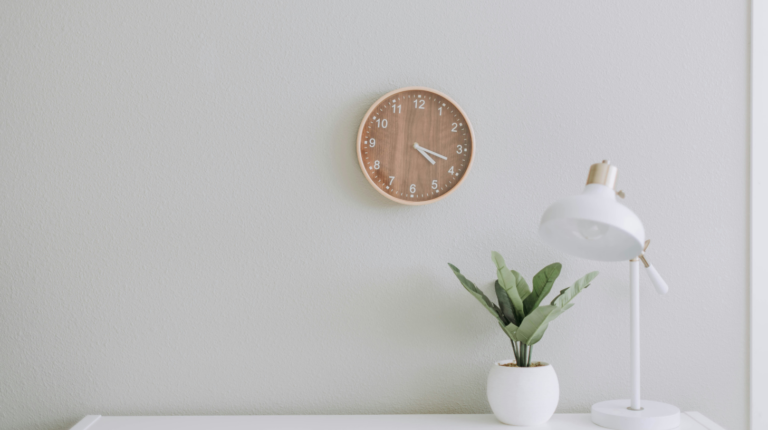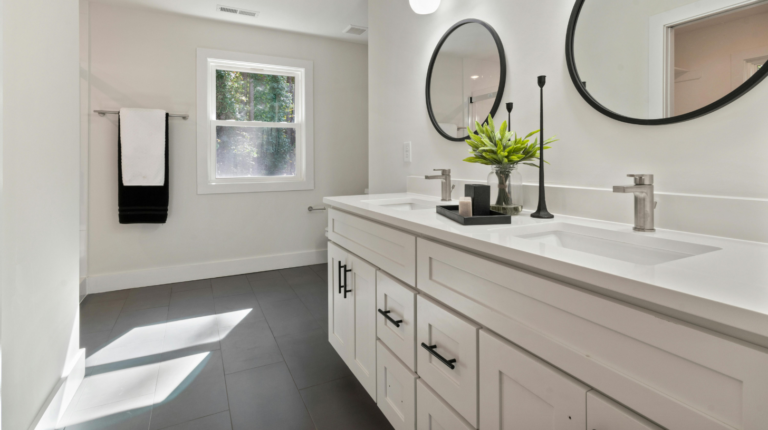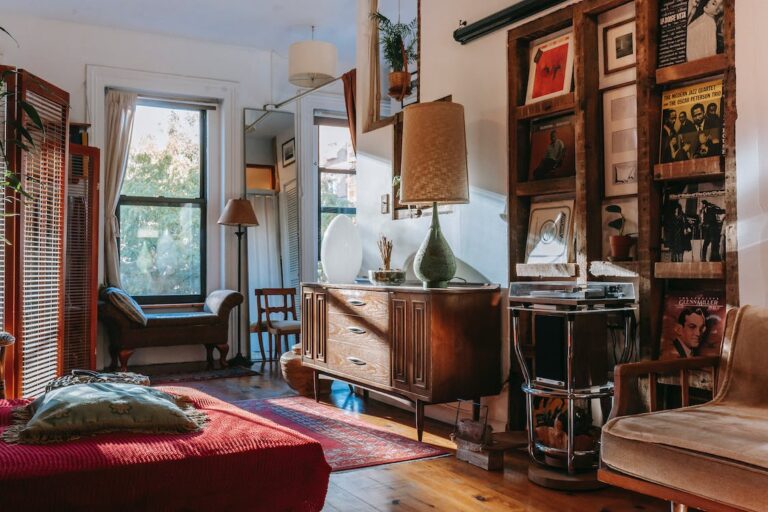Designing a Bathroom for Aging in Places : Tips for Homeowners
In recent years, there has been a significant increase in the desire among homeowners to age in place. Aging in place refers to the concept of growing older and living independently in one’s own home rather than relocating to assisted living facilities or nursing homes. As a result, many homeowners are looking to make necessary modifications to their homes to ensure that they can continue to live comfortably and safely as they age.
One area of the home that often requires attention when designing for aging in place is the bathroom. Bathrooms can pose unique challenges for individuals with mobility and accessibility issues. That’s why it’s essential to design a bathroom that accommodates these needs while still maintaining a stylish and functional space.
In this article, we will explore some practical tips and suggestions for homeowners who are considering designing a bathroom for aging in place. From universal design principles to specific features and fixtures, we will cover everything you need to know to create a safe and accommodating bathroom that will meet the needs of residents of all ages and abilities. So, let’s dive in and discover how you can create a bathroom that caters to the concept of aging in place.
Table of Contents
- 1 Designing a Bathroom for Aging
- 2 Universal Design Bathrooms for Aging in Place
- 3 Features for Safety and Accessibility
- 4 Doorway Widening and Easy Access
- 5 Flooring and Lighting Considerations
- 6 Fixtures for a Designing Bathroom
- 7 Functional and Beautiful Aging in Place Bathroom
- 8 Conclusion
- 9 Frequently Asked Questions
Designing a Bathroom for Aging

The desire to stay in one’s own home as they age is becoming increasingly popular among older adults. According to recent studies, approximately 90% of adults over the age of 65 want to remain in their current homes as they grow older. This trend, known as “aging in place,” has gained traction for several reasons, including the comfort and familiarity of staying in a familiar environment, maintaining independence, and the potential cost savings when compared to moving to a senior living facility.
While aging in place has many benefits, there are certain considerations that need to be taken into account to ensure a safe and comfortable living environment. One area that often requires attention when it comes to home modifications is the bathroom. Upgrading bathroom technologies can greatly enhance the safety, accessibility, and functionality of this essential space.
Upgrading Bathroom Technologies
When it comes to designing a bathroom for aging in place, bathroom renovations are a common focus for homeowners. The bathroom is a high-traffic area that poses various risks, especially for older adults with mobility or balance issues. Investing in bathroom technologies can help mitigate these risks and create a more accessible and convenient space for seniors.
Here are some popular designing a bathroom for aging that can make a difference:
- Walk-in Showers: Traditional bathtubs can be challenging for older adults to navigate safely. Installing a walk-in shower with grab bars and non-slip flooring eliminates the need to step over high tub walls, reducing the risk of falls.
- Comfort Height Toilets: Standard toilets can be difficult for those with limited mobility to use comfortably. Upgrading to comfort height toilets, which are taller than traditional ones, makes sitting down and standing up easier for seniors.
- Handheld Showerheads: Installing handheld showerheads provides added flexibility and convenience for individuals with limited mobility. This allows for easier bathing while sitting or for caregivers assisting with bathing.
- Motion Sensor Lighting: Adding motion sensor lighting to the bathroom ensures that the space is well-lit, even in the middle of the night. This reduces the risk of falls and eliminates the need to fumble for light switches.
- Grab Bars: Installing grab bars near the toilet, shower, and tub helps seniors maintain stability and prevents accidents by providing something to hold onto for support.
By incorporating these and other bathroom technologies, older adults can create a safer and more accessible environment that allows them to age in place with ease and peace of mind. Investing in these upgrades not only enhances the comfort and functionality of the bathroom but also adds value to the home.
In summary, the designing a bathroom for aging in place highlights the desire of older adults to stay in their own homes as they age. Upgrading bathroom technologies is an essential part of creating a safe and accessible living environment. With the right modifications, seniors can enjoy the benefits of a comfortable and functional bathroom that promotes independence and reduces the risk of accidents.
Universal Design Bathrooms for Aging in Place

As we age, our needs change, and everyday tasks like bathing can become more challenging. That’s why universal design bathrooms for aging in place have gained popularity. These bathrooms are designed with accessibility and safety in mind, allowing individuals to live independently and comfortably in their homes for as long as possible.
Shower Enlargement
One key feature of universal designing a bathroom for aging is the enlargement of the shower area. The recommendation is to have a shower with dimensions of at least 5′ x 3′. This larger size provides several benefits for aging individuals:
- Ample space for mobility: A larger shower area allows for easier movement and maneuverability, especially for those using mobility aids such as walkers or wheelchairs. It eliminates the hassle of tight spaces and ensures that individuals can comfortably move around while bathing.
- Assistance during bathing: With a larger shower area, there is more room for a caregiver or medical professional to assist in bathing if needed. This is crucial for individuals who require assistance or supervision during their bathing routine.
- Accessibility: A spacious shower area makes it easier to install grab bars, shower seats, and other assistive devices that enhance safety and accessibility. These features provide stability and support for individuals with reduced strength or balance, reducing the risk of slips and falls.
Importance of Safety
Safety is of utmost importance when designing a bathroom for aging in place. Slip and fall accidents are a significant concern, particularly in the shower. In fact, most slip and fall accidents among seniors occur in the bathroom. Fortunately, universal design bathrooms address this issue by incorporating safety features that minimize the risk of accidents:
- Non-slip flooring: The bathroom floor should be slip-resistant, reducing the chances of falls due to wet surfaces. Textured tiles, non-slip mats, or adhesive strips can be used to create a safer environment.
- Grab bars: Strategically placed grab bars provide stability and support for individuals while entering, exiting, or moving within the shower area. These bars should be securely installed and capable of bearing the weight of an individual.
- Walk-in showers: Eliminating the need to step over a high threshold reduces the risk of tripping and falling in the shower. Walk-in showers with low or no thresholds provide easy access and are particularly beneficial for those with mobility issues.
By incorporating these essential safety features into the designing a bathroom for aging, ensure that individuals can maintain their dignity, independence, and safety while bathing. Whether aging in place or planning for the future, a universal design bathroom is an investment in comfort and peace of mind.
Features for Safety and Accessibility

When it comes to designing a bathroom for aging that caters to the needs of individuals who are aging in place, safety and accessibility are of utmost importance. Installing specific features can make a significant difference in creating a bathroom that is both functional and comfortable for all users. In this section, we will explore three essential features for safety and accessibility: grab bars, shower seats, and curbless showers.
Grab Bars
One of the key elements in a well-designing a bathroom for aging in place is the installation of grab bars. These sturdy and strategically placed bars provide support and stability for individuals with mobility challenges.
Here are some key benefits of designing a bathroom for aging:
- Preventing Falls: Grab bars provide a reliable point of support, helping individuals maintain their balance and prevent falls while navigating the bathroom space.
- Accessibility: They make it easier for individuals to access the toilet, bathtub, or shower independently, ensuring a greater level of independence and privacy.
- Versatility: Grab bars can be installed in various positions and heights based on individual needs and preferences. They can be placed near the toilet, bathtub, shower, or anywhere else that requires additional support.
Did you know?
According to the National Institute on Aging, falls are the leading cause of injuries among older adults. Installing grab bars can significantly reduce the risk of falls in the bathroom.
Shower Seats
For individuals who may have difficulty standing for extended periods or lack the stability needed to shower safely, a shower seat can be an invaluable addition to the bathroom.
Here are some advantages of designing a bathroom for aging shower seats:
- Comfort: Shower seats provide a comfortable seating option, allowing individuals to relax while bathing instead of standing, minimizing fatigue and discomfort.
- Safety: By providing a stable and secure seating surface, shower seats reduce the risk of falls and make bathing a safer and more enjoyable experience.
- Convenience: Shower seats facilitate independence, enabling individuals to shower without assistance, thereby enhancing their privacy and dignity.
Fun fact:
Modern shower seats come in a variety of styles and materials, including foldable options that can be conveniently stored away when not in use.
Curbless Showers
Curbless showers, also known as walk-in showers, are designed without the traditional barrier of a raised curb or step. These showers offer a seamless transition from the bathroom floor to the shower area, making them easily accessible for individuals with mobility challenges.
Let’s explore the benefits of curbless showers:
- Accessibility: Curbless showers provide a smooth and obstacle-free entry, eliminating the need to step over a raised barrier, which can be challenging for individuals with limited mobility or those who use mobility aids.
- Safety: With no step or curb to navigate, the risk of tripping or falling is significantly reduced, creating a safer showering environment.
- Aesthetics: Curbless showers can lend a modern and spacious look to the bathroom, offering a sleek and minimalist design aesthetic.
Did you know?
In addition to their accessibility benefits, curbless showers are also favored for their ease of cleaning, as there are no obstacles or hard-to-reach corners to contend with.
By incorporating features such as grab bars, shower seats, and curbless showers, you can enhance the safety, accessibility, and overall functionality of an aging in place bathroom design. These features not only provide practical benefits but also contribute to a more comfortable and enjoyable bathing experience for individuals of all ages and abilities.
Doorway Widening and Easy Access

Widening doorways and ensuring easy access to the designing a bathroom for aging are crucial for an aging in place-friendly design. As individuals age, they may experience mobility issues or require the use of assistive devices such as walkers or wheelchairs. By widening doorways and improving accessibility, you can create a more inclusive and safe environment for aging individuals.
The Importance of Widening Doorways
Widening doorways is a fundamental aspect of creating an accessible bathroom. The standard doorway width of 32 inches may be too narrow for individuals with mobility issues or those using mobility aids. By increasing door width, you remove barriers and allow for easier entry and maneuvering within the bathroom.
Benefits of Easy Access
Providing easy access to the bathroom offers numerous benefits for aging individuals. Here are a few reasons why doorway widening and improving accessibility should be a top priority:
- Improved Safety: Easy access to the bathroom reduces the risk of falls and accidents. By widening doorways, you allow individuals to navigate comfortably and safely, especially when using mobility aids.
- Independence: Doorway widening and easy access empower aging individuals to maintain their independence and perform daily tasks with minimal assistance. They can confidently navigate their homes without relying heavily on others.
- Greater Comfort: An accessible bathroom enhances comfort and convenience for aging individuals. They can move freely within the space and perform personal care tasks without feeling cramped or restricted.
- Future-Proofing: Doorway widening and easy access ensure that your home remains adaptable for future needs. Creating an inclusive design now can save you the hassle and expense of retrofits down the road.
Practical Considerations for Doorway Widening
When undertaking doorway widening and accessibility improvements, there are a few practical considerations to keep in mind:
- Door Frame: It’s essential to assess the current door frame and determine if it can accommodate a wider door. If not, you may need to modify or replace the frame to accommodate the desired width.
- Structural Integrity: Before widening a doorway, consult with a professional to ensure that the structural integrity of your home is not compromised. They can provide guidance on the best approach to widening the doorway safely.
- Flooring: Evaluate the flooring material to ensure a smooth transition from the hallway to the bathroom. Floor height discrepancies can pose a tripping hazard, so it’s crucial to address any unevenness during the widening process.
- Accessibility Fixtures: Alongside widening the doorway, consider installing other accessibility fixtures such as grab bars, non-slip flooring, and a raised toilet seat. These additions further enhance safety and ease of use.
In summary, widening doorways and ensuring easy access to the bathroom are essential for an aging in place-friendly design. By removing physical barriers and improving accessibility, you create a safer, more comfortable, and inclusive environment for aging individuals. Prioritizing doorway widening and making accessibility improvements can greatly enhance the overall quality of life for individuals who wish to age in place.
Flooring and Lighting Considerations
When it comes to designing a bathroom for aging, one of the most important aspects to consider is the flooring and lighting. Not only do these elements play a significant role in the overall aesthetic appeal of the space, but they also contribute to the safety and functionality of the bathroom. In this section, we will explore two crucial considerations when it comes to flooring and lighting in the bathroom: non-slip flooring and proper lighting.
Non-Slip Flooring
One of the primary concerns when choosing flooring for the bathroom is ensuring that it is non-slip. Bathrooms can become wet and slippery, making them potentially hazardous, particularly for older adults or individuals with mobility limitations. Therefore, prioritizing flooring that offers good traction and prevents falls is of utmost importance.
Some options for non-slip flooring include:
- Textured tile: Tiles with a rougher surface provide better grip and reduce the risk of slipping.
- Vinyl flooring: Certain types of vinyl flooring come with slip-resistant properties, making them an excellent option for bathrooms.
- Mats and rugs: Placing mats or rugs with non-slip backings near the shower or bathtub can offer an additional layer of protection against slips.
Investing in non-slip flooring not only enhances the safety of the bathroom but also provides peace of mind for you and your loved ones.
Proper Lighting
Proper lighting is an essential consideration for bathroom safety, especially considering the potential diminished vision that may occur with age. Inadequate lighting can lead to accidents and make performing tasks such as shaving or applying makeup more challenging. On the other hand, good lighting improves visibility, reduces the risk of falls, and enhances the overall ambiance of the bathroom.
Here are some tips for ensuring proper lighting in your bathroom:
- Natural light: If possible, maximize natural light by incorporating windows or skylights in the bathroom design.
- Vanity lighting: Install lighting fixtures around the vanity mirror to provide sufficient illumination for grooming tasks.
- Overhead lighting: Consider installing overhead lighting fixtures to evenly distribute light throughout the space.
- Task lighting: Place lighting fixtures near the shower, bathtub, and toilet areas to ensure visibility during use.
By carefully planning and incorporating appropriate lighting fixtures, you can create a well-lit bathroom that promotes safety and functionality.
In conclusion, when it comes to designing a bathroom, flooring and lighting considerations play a crucial role in both aesthetics and safety. By prioritizing non-slip flooring options and ensuring proper lighting, you can create a bathroom that is not only visually appealing but also safe and functional for everyone to enjoy.
Also Read : Minimalist Bathroom Ideas: Creating a Spa-like Retreat in 2024
Fixtures for a Designing Bathroom

When it comes to choosing fixtures for your home, it’s important to consider both practicality and aesthetics. The right fixtures can enhance the functionality and style of any space, and this is especially true for two essential fixtures: toilets and sinks. In this section, we will explore two recommended fixtures – higher toilets and wall-mounted sinks – and explain why they can be great additions to your home.
Higher Toilets
Have you ever experienced discomfort while using a standard-sized toilet? If so, a higher toilet might be the solution you’ve been looking for. Higher toilets, also known as comfort or ADA-compliant toilets, are designed with a taller seat height than traditional toilets.
Here’s why they are worth considering:
- Improved accessibility: Higher toilets are especially beneficial for individuals with mobility issues or the elderly. The increased seat height makes it easier for them to sit down and stand up, promoting independence and reducing the risk of falls.
- Enhanced comfort: The added height of a higher toilet provides a more comfortable seating position, eliminating the strain on the knees and making it easier for people of all ages to use.
- Aesthetic appeal: Higher toilets come in various designs and styles, allowing you to choose one that matches the overall aesthetic of your bathroom. They can add a touch of elegance and sophistication to any space.
Wall-Mounted Sinks
If you’re looking to maximize space and create a sleek, modern look in your bathroom, a wall-mounted sink is an excellent choice. Here’s why:
- Space-saving design: Wall-mounted sinks are ideal for small bathrooms or powder rooms where space is limited. By eliminating the bulky pedestal or vanity, you can create the illusion of a larger and more open space.
- Easy maintenance: Cleaning around a wall-mounted sink is a breeze. With no base or cabinet to work around, you can easily reach all areas of the sink and the wall behind it, ensuring a thorough and effortless cleaning experience.
- Versatility: Wall-mounted sinks come in various shapes, sizes, and styles, allowing you to find the perfect fit for your bathroom decor. Whether you prefer a sleek and minimalist design or a more ornate and traditional look, there is a wall-mounted sink that will suit your taste.
Incorporating higher toilets and wall-mounted sinks into your home can make a significant difference in both functionality and style. These fixtures offer practical benefits and aesthetic appeal, making them valuable additions to any bathroom. Consider these recommendations when selecting fixtures for your home, and you’ll create a space that is both functional and visually pleasing.
Functional and Beautiful Aging in Place Bathroom
As we age, it’s important to adapt our living spaces to ensure comfort, safety, and accessibility. One area that often requires modification is the bathroom, as it can present a variety of challenges for older adults. In this section, we’ll explore two essential elements of a functional and beautiful aging in place bathroom: a wooden shower seat and no-slip tiles and countertops.
Wooden Shower Seat
A wooden shower seat is a fantastic addition to an aging in place bathroom for several reasons. Not only does it provide a comfortable and sturdy place to sit while showering, but it also offers additional support and stability for those with mobility issues.
Here’s why a wooden shower seat is a must-have:
- Comfort: Sitting on a hard shower floor can be uncomfortable, especially for older adults who may have joint pain or mobility limitations. A wooden shower seat provides a cushioned and comfortable surface to sit on, making showering a more pleasant experience.
- Safety: One of the main benefits of a shower seat is the increased safety it provides. By sitting while showering, older adults can reduce their risk of slips, falls, and accidents. The stability and support offered by a wooden shower seat can be especially beneficial for those with balance issues or limited mobility.
- Accessibility: A shower seat ensures that individuals can comfortably and easily access all areas of their bodies while bathing. This includes washing their feet, legs, and hard-to-reach areas without straining or compromising their balance.
No-Slip Tiles and Countertops
Slippery surfaces in the bathroom pose a significant risk for older adults, making it crucial to incorporate no-slip tiles and countertops into an aging in place bathroom. These features not only enhance safety but also add a touch of elegance to the space.
Here’s why they’re essential:
- Safety: No-slip tiles and countertops are designed to prevent slips and falls by offering increased traction. Their textured surfaces create a firm grip underfoot, reducing the likelihood of accidents. This is particularly important in areas that are prone to getting wet, such as showers, floors, and countertops.
- Accessibility: For individuals with mobility challenges, it’s essential to have surfaces that are easy to navigate, even with limited balance or mobility. No-slip tiles and countertops provide a stable and secure foundation, allowing older adults to move around the bathroom confidently and independently.
- Aesthetics: Beyond their functional benefits, no-slip tiles and countertops are available in a wide range of colors, patterns, and designs. This allows homeowners to create a beautiful and stylish bathroom while still prioritizing safety and accessibility.
In conclusion, incorporating a wooden shower seat and no-slip tiles and countertops are crucial components of creating a functional and beautiful aging in place bathroom. These additions not only enhance safety and accessibility but also contribute to a stylish and inviting space that can be enjoyed for years to come.
Conclusion
In conclusion, designing a bathroom for aging in place is an essential consideration for homeowners who want to ensure the safety and accessibility of their space. By implementing universal design principles, such as shower enlargement and the installation of grab bars and shower seats, homeowners can create a bathroom that meets the needs of individuals of all ages and physical abilities. Additionally, widening doorways and selecting non-slip flooring and proper lighting are crucial for ease of movement and minimizing the risk of falls. Incorporating recommended fixtures like higher toilets and wall-mounted sinks further enhances the functionality and accessibility of the bathroom.
Ultimately, creating a functional and beautiful designing a bathroom for aging in place is possible by incorporating features like a wooden shower seat and no-slip tiles and countertops. With these considerations in mind, homeowners can create a bathroom that not only caters to their current needs but also provides a safe and comfortable space to age in place.
Thank you for reading this article on designing a bathroom for aging in place! We hope you found these tips helpful and inspiring. If you’re interested in exploring more design ideas and inspirations for your home, be sure to check out Arkitecture Today, your go-to online blog for daily doses of architecture, home and interior design, decoration ideas, and inspiration. Visit us at arkitecture.today for more fascinating content.
Frequently Asked Questions
- What does it mean to designing a bathroom for aging in place?
Designing a bathroom for aging in place means creating a space that is safe, accessible, and comfortable for individuals as they grow older. It involves incorporating features such as grab bars, non-slip flooring, and walk-in showers to accommodate mobility challenges.
- What are some important elements to consider when designing an accessible bathroom?
Some important elements to consider when designing an accessible bathroom are: installing grab bars near the toilet and shower, ensuring ample space for maneuverability, using non-slip flooring, incorporating a walk-in shower with a built-in bench, and having adjustable showerheads and faucets.
- Are there any specific toilet options for designing a bathroom for aging in place?
Yes, there are specific toilet options designing a bathroom for aging in place bathroom design. Some popular choices include installing comfort-height toilets that are easier to sit and stand up from, and adding toilet seat risers or frames with grab bars for additional support.
- How can lighting be optimized in designing a bathroom for aging in place ?
To optimize lighting in an aging in place bathroom, it’s recommended to incorporate bright, even lighting throughout the space to minimize shadows and improve visibility. Adding motion-sensor lights near the bathroom entrance can also be beneficial.
- Is it necessary to hire a professional for designing a bathroom for aging in place ?
While it’s not mandatory to hire a professional, it is highly recommended to consult with an experienced bathroom designer or contractor who specializes in aging in place design. They can provide valuable insights and ensure that all necessary accessibility features are incorporated correctly.







